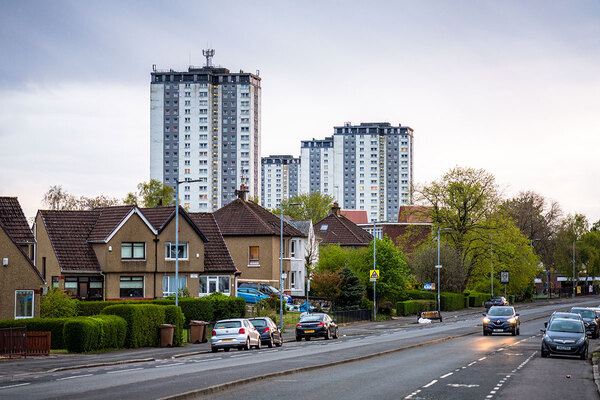You are viewing 1 of your 1 free articles
Scottish government publishes new fire safety guidance for multi-storey buildings
A new advice note has been published by the Scottish government to help determine the fire risk posed by external wall systems in multi-storey buildings.
Published last week, the advice note is part of the Scottish government’s response to the building safety crisis uncovered by the Grenfell Tower fire.
It provides guidance to building owners and risk assessors on how to determine the level of risk posed by existing multi-storey residential buildings, including blocks of flats, student accommodation, hospitals and care homes.
In March this year, the Scottish government announced that it was launching a Single Building Assessment programme, which will carry out checks on all buildings with cladding.
The Scottish government said its new guidance will “assist those undertaking Single Building Assessments and help in resolving the difficulties people have faced in buying, selling and remortgaging their homes in Scotland”.
The guidance sets out under what circumstances intrusive appraisals should be carried out on buildings to determine the fire risk and under what circumstance such an appraisal should not be necessary.
It also outlines when temporary measures, such as a waking watch, should be implemented within a building where a fire risk has been identified.
The advice note sets out a range of factors that should be considered by those determining the risk posed by external wall systems.
As part of this, it places a distinction between buildings that are “extensively clad” and “partially clad” with the most dangerous types of cladding.
The guidance also provides separate guidance for buildings above 11 metres and below 11 metres.
This is a different approach to the Westminster government, which often assesses risk based on an 18 metre threshold and has not emphasised a difference between extensively and partially clad buildings.
Like in England, flat owners in Scotland have often found themselves unable to move home since mortgage lenders began requiring that EWS1 checks are carried out on their building before they are willing to lend.
This check requires a qualified fire inspector to check the materials on a building’s external wall and decide if it needs remediation, or whether it can be given a clean bill of health for the banks to lend on.
Last month the UK government announced that EWS1 checks should no longer be carried out on buildings below 18 metres.
However, the country’s largest mortgage providers told Inside Housing they will not change their policies on EWS1 checks until the government revoked its own consolidated advice note, which asks building owners to check cladding systems on buildings regardless of height.
Sign up for our fire safety newsletter
Already have an account? Click here to manage your newsletters














